When I first went to college, I started school in September every year to take the starting station for the Wuhan terminal as the green leather train in Urumqi. When the train passed through Henan, it would come to a large number of local cotton picking in Xinjiang. People, at that time, because of the location of the site and the peak of returning to school, the cotton pickers often only buy seats without tickets, which means they may have to stand for one day and one night and then continue to transfer and then transfer to the homework. Field.
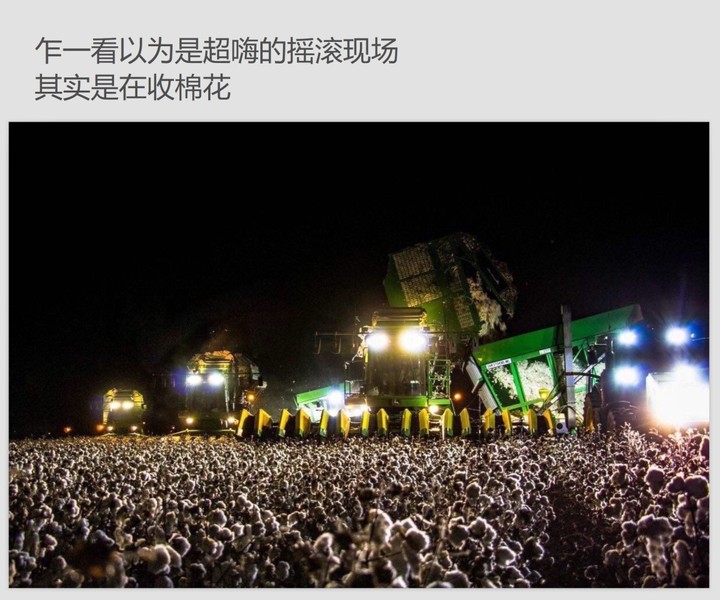
The current situation is different. In the past years, the number of cotton-collecting troops rushing to Xinjiang from Anhui, Anhui, and other places in Xinjiang has gradually changed from a million to a million. Galloping on the vast land of Xinjiang, it became a large-scale agricultural machine. These high-efficiency cotton pickers have a day and night, and they have to pick up thousands of acres of cotton land in a limited time. So there is a rock scene that is thought to be a super-rocky scene. Scene.
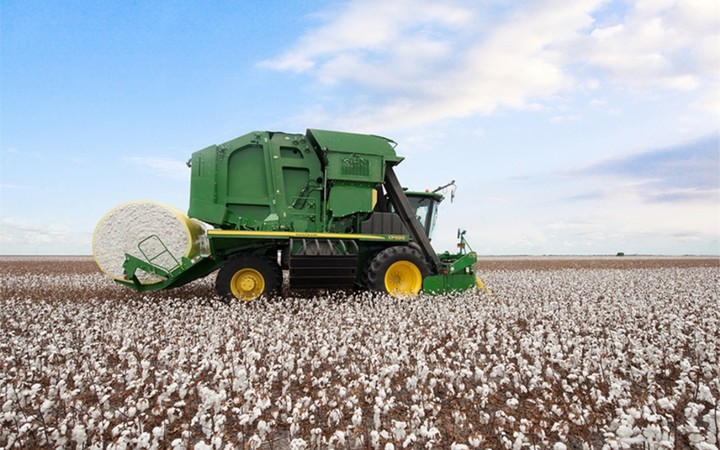
The John Deere CP690 cotton picker in the picture above can be said to be the Rolls Royce in the cotton picker. At least its price of more than 5 million is not cheaper than some Rolls-Royce models, and behind the high price, It is high input and high output.
Cotton is not so easy from seed to clothes
In fact, the replacement of artificially harvested cotton by large agricultural machinery is only one part of the cotton industry. From a single seed to the clothes we wear, there are many production steps.
Mechanical picking will of course greatly increase productivity, but it will also face new problems. When large-scale agricultural machinery picks cotton, if it is not defoliated, the dried cotton leaves will be mixed with cotton in the picking process, which becomes a lot of impurities that are difficult to clean, affecting the quality of cotton and subsequent production.
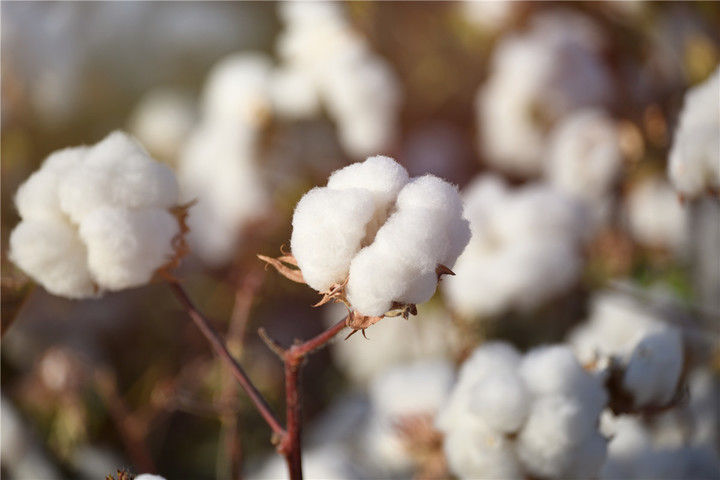
Therefore, before the cotton picker is placed on the ground, it is necessary to spray the cotton with a pesticide called “defoliation agent”. The “defoliation agent” is a biological regulating agent, which can make the cotton vomit in the same time. Mature, deciduous, convenient for machine for uniform harvesting.
A new problem has arisen. In the past, there were two ways to spray “defoliant” pesticides on cotton: manpower and tractors.
The problem of manpower spraying pesticides is obvious: the efficiency is too slow and there is a danger of pesticide poisoning. In addition, especially for the Xinjiang cotton field plots on the tens of hundreds of acres, the rising labor costs make artificial spraying of pesticides very expensive. Moreover, in the process of manpower spraying, when cotton plants move around, some cotton flowers may be thrown off.
Tractors spraying pesticides are of course superior to manpower in terms of efficiency and cost, but because the tractors are going to the ground, the tires will inevitably pour the cotton plants, causing a reduction in production, and over time, the land will be compacted and lose vitality.
In the case of a 1000-mu cotton field, if you use a tractor to spray defoliants, you need to open at least 3 来回 each time. When you squat down, you will crush about 1 mus of cotton, a total of 6 locomotives. The loss of cotton of 5-6 mu is calculated at the price of 400 kg per mu of cotton field and 8 yuan per kilogram. The loss caused by tractor spraying defoliant is about 16,000-192,200.
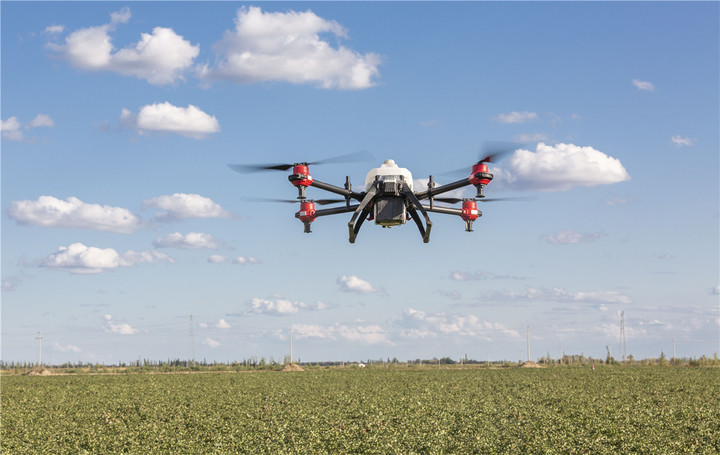 =” =” >
=” =” >
The emergence of drones has changed not only aerial photography, but also agriculture.
In late September, Ai Faner and Feifei Technology came to Yuli County, Bayinguoleng Mongolian Autonomous Prefecture to see how drones changed the way of agricultural production here.
Since 2017, in order to cope with the concentrated demand of Xinjiang cotton farmers for dredger spraying defoliants, Extreme Flying Technology began to dispatch hundreds of operation teams across the country, and over one thousand plant protection drones came to Xinjiang for spraying operations. The spraying area in that year exceeded 2 million mu. The cumulative working area in 2018 exceeded 6.7 million mu.
This vast project was called “wing” by Feifei Technology.

The size of the “wing” in this autumn is much better than in the past. Nearly 3,000 ultra-flying plant protection drones, more than 1,500 flying hands, and more than 1,000 flying defense teams have flown from Xinjiang to Xinjiang, and combined with more than 1,500 local Xinjiang. Drone, it took only three weeks to completeWith a spray area of 15 million mu, it is expected that the operating area of the “wing” will exceed 20 million mu this autumn.
Of course, the work of drones in plant protection is also something that has only happened in recent years. It is not just a variant of aircraft spraying pesticides, but a new way of operation, which requires technical re-development.
The main difficulty in this area is the precision and strength of the spray.
If using GPS positioning technology, due to various factors, there is actually a meter-level error with the real position of the ground, which has no effect on aerial photography, but it is a big problem for pesticide spraying. The error is likely to allow the pesticide to be sprayed on the field, not on the crop.
To this end, the ultra-flying plant protection drone uses RTK technology (Real-time kinematic, real-time dynamic differential technology) to locate, through calculation, this technology can get satellite positioning correction information, improve positioning accuracy to The centimeter level allows the ultra-flying drone to fly accurately in accordance with the farmland route, avoiding crop damage caused by heavy spray or leaking spray.
However, compared to GPS positioning technology, RTK technology needs to do further work to establish a ground station, and transmit the carrier phase collected by the base station to the user receiver by processing the difference method of carrier phase observation of two measurement stations in real time. To perform the difference calculation coordinate, which means that the flying needs to establish a large number of RTK base stations on the ground to ensure the positioning of the drone.
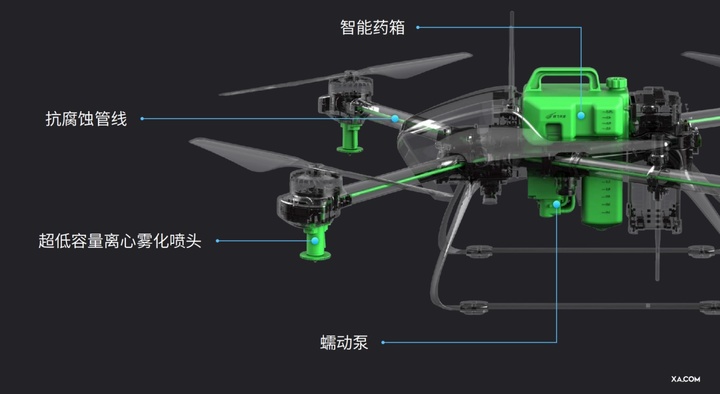
Another technology is the iRASS centrifugal atomizing spray system, which can form micron-sized atomized particles (90-300μm) and control the liquid drift with the help of the unmanned aerial propeller’s downwind field. The atomized liquid particles can be uniformly attached to the surface of the plant and the back of the leaf to achieve precise spraying effect.
The significance of precision spraying is not only to increase the use of pesticides, but also to save pesticides and reduce pesticide residues. In Xinjiang, many farmers have thousands of acres of farmland, which can save dozens of pesticides per acre, which may leave tens of thousands.
Thanks to these two core technologies, a P30 flying plant protection drone can spray more than 150 acres of farmland per hour, equivalent to 60 individual workers.
There is still a lot of work similar to the construction of ground-based base stations, because the use of plant protection drones and the use of people decided, it must be very strong and reliable, and easy to operate. This makes the work behind it extremely cumbersome.
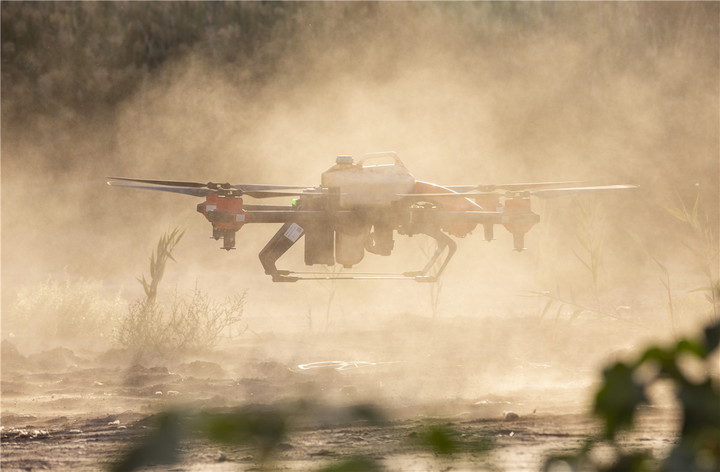
For example, there are many dry and dusty weather in Xinjiang, and the drones work with water and pesticides, which means that drones need to be highly dust- and waterproof.
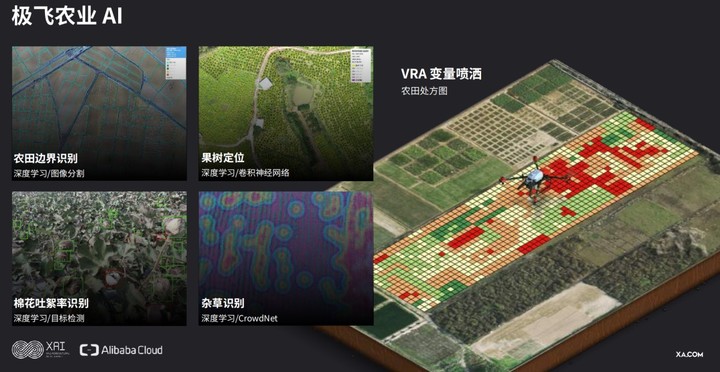
In the back of RTK positioning technology, accurate farmland geographic information is needed to plan the scope of each drone operation. This requires heavy farmland mapping work. At the beginning, it is necessary to manually carry out surveying and mapping work. A farmland can be used to obtain farmland geographic information. However, it is impossible for all tens of millions of acres of farmland to be manually surveyed. This has driven the development of the “Mighty Man” mapping drone, and the work of mapping the drone has to rely on computer vision to work. Otherwise, it will not be able to distinguish Tianhe Road. So, so flying, you have to do artificial intelligence work…
Being a farmer is very bitter and cool…
The city of Yuli County is driving east or east for an hour or two. It is a gobi desert, a low and rare plant. The dry ground and the drooping clouds are repeated in front of you. The road below the wheel is actually not a road. It is more like a “mark”. The vehicles that are sporadically flowed over and over again.
The farmland of Han Guang and Han Hui brothers is in the Gobi Desert.

▲Gobi Landscape
When our group of people drove for nearly two hours in the dusty Gobi Desert, they suddenly realized the large-scale cotton fields in front of them, and then they deeply understood the feeling that “the mountains and heavy waters have no way to reconcile, and the flowers are dark and bright.” Liu, the only plant in the Gobi Desert, is the main crop of cotton in Xinjiang.
Thanks to the strong infrastructure of the motherland, even in the depths of the Gobi Desert, there are still electricity and network signals.
When we saw the Han Guang Han Hui brothers in the endless cotton sea, they were directing workers to use drones to fight cotton.
The Korean brothers who have been exposed to the sun all the year are black, and his brother Han Hui graduated from China University of Political Science and Law in 2003, and then responded to his brother’s call to return to Yuli County to grow cotton. Han Guang, 43 years old, began to grow cotton after graduating from high school. It has been more than 20 years now. They planted a total of 4,000 acres of cotton in Yuli County, and the younger brothers accounted for 1,500 acres.
This year is the fourth year they used drones to spray defoliants, but the difference is that this year Hanguang Hanhui brothers did not ask the UAV team in the field to carry out pesticide spraying work, but purchased them themselves. Two drones.
In fact, in addition to defoliants, cotton should be sprayed 8–10 times throughout the growth process, including chemical control agents, defoliants, foliar fertilizers, insecticides, defoliants, and so on.
For large farmers such as the Korean brothers, instead of frequently booking a drone team, it is better to spend money on the usual drones. Although the price of a flying plant protection drone is as high as 100,000, the benefits it brings are obvious. In addition to greatly improving efficiency and reducing labor costs, Han Hui manages through drone precision application technology. After the cotton field, the use rate of medicine and fertilizer has been greatly improved, and the cost of medicine has only been used..80 million, saving more than 40,000 compared to the original cost of 80,000.
In cotton planting, there are still many such scientific and technological income-increasing links, ranging from high-quality variety selection to refined cotton management to efficient and precise defoliation and harvesting.
Experience knowledge, coupled with scientific management, and the addition of new “agricultural machinery” such as drones, have given hope to the Han family’s cotton fields. It is expected that the yield per mu of cotton fields will reach 450-500kg this year. The average local yield per mu is 50-100kg higher.
Xinjiang’s cotton production accounts for 4/5 of the national products, and the planting area is large, and the planting area is concentrated. As far as cotton is concerned, the natural conditions of Xinjiang’s producing areas are fully capable of reaching the growing areas of the United States and Australia. Standards, this is also a broad stage for large-scale agricultural machinery and drones to play a role, and is also the future of China’s cotton participation in international competition.
Although the actions of the Korean brothers to plant land in the Gobi Desert are quite certain, the addition of drones and large cotton pickers has greatly reduced their burden, but the rolling dust and dark skin still complain. The hard work of farming. However, the aggressive attitude of embracing technology and the optimistic attitude towards the environment have made these two new-age farmers full of “coolness.”

I remember one time when I watched the “Aeronautical China” Shaanxi documentary on the plane, I was most shocked.